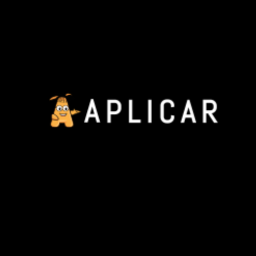For international students pursuing an MBBS (or MD) degree in the USA, obtaining the correct visa is a crucial step. The process involves various stages, including obtaining an acceptance letter from a medical school, applying for the appropriate visa, and attending an interview at a U.S. consulate. Here is a comprehensive guide to the visa process for international MBBS students in the USA:
1. Receive Admission to a U.S. Medical School
Before applying for a visa, international students must secure admission to a medical school in the USA. Most medical schools in the U.S. provide an I-20 form after accepting a student into their program. The I-20 is essential for applying for a visa.
Requirements for Admission:
- Completion of a pre-medical undergraduate degree (or equivalent) with necessary prerequisite courses.
- Taking the MCAT (Medical College Admission Test) and achieving a competitive score.
- Submission of letters of recommendation, personal statements, transcripts, and proof of financial support.
2. Types of Student Visas
a. F-1 Student Visa
- The F-1 visa is the most common visa for international students pursuing an MBBS (MD) degree in the USA. It is issued to students enrolled in full-time academic programs.
- The F-1 visa allows students to stay in the USA for the duration of their studies and provides opportunities for Optional Practical Training (OPT) after completing their degree.
b. J-1 Exchange Visitor Visa
- The J-1 visa is another option, though it is less common for medical students. It is typically used for students in specific exchange programs.
- The J-1 visa has similar benefits to the F-1 visa but comes with additional conditions, such as a home residency requirement after completing studies.
c. M-1 Visa
- The M-1 visa is reserved for vocational or non-academic students and does not apply to MBBS programs, which are academic in nature.
3. Apply for the Visa
a. Pay the SEVIS Fee
- Before applying for a visa, students must pay the SEVIS (Student and Exchange Visitor Information System) fee. The SEVIS fee is $350 for F-1 visa applicants.
- After payment, keep the receipt, as it will be required during the visa application process and at the interview.
b. Complete the DS-160 Form
- All visa applicants must complete the DS-160 form, which is the online non-immigrant visa application.
- Once completed, print the confirmation page with the barcode, as this is needed for the visa interview.
c. Schedule a Visa Interview
- Applicants need to schedule an interview at the nearest U.S. embassy or consulate.
- Be prepared for long wait times for interview slots, especially during peak application periods, so apply early.
4. Documents Required for the Visa Interview
During the visa interview, applicants will need to present the following documents:
- Form I-20 issued by the medical school.
- Valid passport (valid for at least six months beyond your intended stay in the USA).
- DS-160 confirmation page.
- SEVIS fee payment receipt.
- Visa application fee receipt (the fee is usually around $160).
- Financial documentation proving the ability to cover tuition and living expenses in the USA. This may include bank statements, scholarship letters, or affidavits of support.
- Acceptance letter from the U.S. medical school.
- Passport-sized photographs as per U.S. visa photo requirements.
5. Visa Interview Preparation
The visa interview is a critical step in the process. Here are some tips for preparation:
- Confidence and Clarity: Be clear about your reasons for pursuing medical education in the USA and your future plans.
- Proof of Ties to Home Country: Be ready to explain your plans to return to your home country after completing your degree, especially if you are applying for an F-1 visa.
- Financial Support: Be prepared to demonstrate that you have the financial means to cover the cost of education and living expenses without relying on illegal employment in the USA.
6. Visa Issuance and Travel to the USA
If the visa is approved, it may take a few days or weeks to be stamped in your passport. Once you receive your visa:
- Review the visa carefully to ensure all details are correct.
- You are allowed to enter the USA 30 days before the start date mentioned on your I-20 form.
- Plan your travel accordingly, ensuring that you have all the necessary documents for immigration at the U.S. port of entry.
7. Maintaining Visa Status
Once in the USA, it is important to maintain your F-1 visa status:
- Full-Time Enrollment: You must be enrolled in a full-time program of study and meet attendance requirements.
- Work Authorization: You are permitted to work on-campus up to 20 hours per week during the academic term, but off-campus work requires authorization from the U.S. Citizenship and Immigration Services (USCIS), such as through Curricular Practical Training (CPT) or Optional Practical Training (OPT).
- SEVIS Record Maintenance: Keep your SEVIS record updated by reporting any changes in your program, address, or personal information to your school’s Designated School Official (DSO).
8. Optional Practical Training (OPT)
After completing the MBBS (MD) degree, F-1 visa holders can apply for Optional Practical Training (OPT), which allows them to work in the USA for up to 12 months.
- Medical graduates often use this time to pursue residency training in the USA.
- For STEM (Science, Technology, Engineering, and Mathematics) programs, OPT can be extended for an additional 24 months, though medicine generally does not fall under the STEM category.
Conclusion
The visa process for international MBBS students in the USA involves several stages, from securing admission and receiving the I-20 form to paying fees and attending the visa interview. Proper preparation and documentation are key to obtaining an F-1 visa, which allows international students to pursue their dream of studying medicine in the USA. With careful planning, students can smoothly navigate the process and focus on their medical education.




